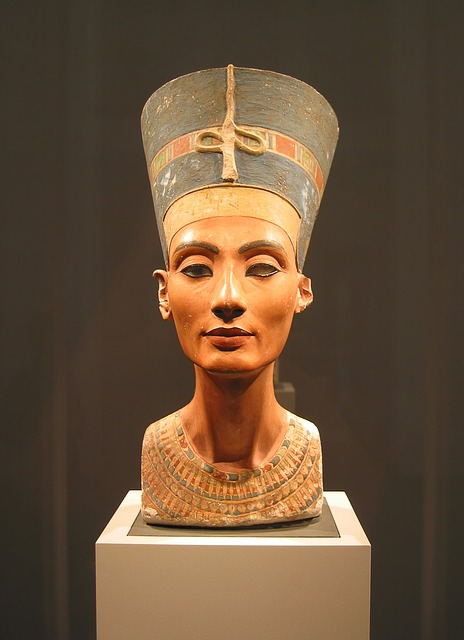Nefertiti was queen alongside Pharaoh Akhenaten from 1353 to 1336 BC and she was known as one of the most mysterious and powerful women in ancient Egypt. Known as the Ruler of the Nile and Daughter of Gods, Nefertiti was believed to have ruled the New Kingdom following her husband's death. But the controversy built up after a 12th regal year of Akhenaten when her name vanished from the pages of Egypt's history.
Over the years, historians discussed upon the theory that Queen Nefertiti's remains were hidden beyond the walls of the famous 3,300-year-old tomb of King Tutankhamun. Now after relentless research, they stumbled upon the fact that the theory was true after studying inside with radar technology.
The Daughter of Gods, Nefertiti
As per the historical findings she was known throughout Egypt for her beauty, even though many experts have denied this claim. Many believe that Nefertiti was so proud of her long, swan-like neck and invented her own makeup using the Galena plant. The long-forgotten history of this queen of ancient Egypt was made famous after her bust was discovered which is now placed in Berlin's Altes Museum.
It should be mentioned that in 1913 December, a team of researchers led by German archaeologist Ludwig Borchardt discovered a sculpture buried upside-down in the ruins of the excavated workshop of the royal sculptor Thutmose in Amarna. Later, the bust was revered by Hitler, who kept it secured from the Allied bombs in a salt mine and was later coveted by East Germany throughout the Cold War period.

The disappearance of the queen
But her sudden disappearance from the history records, after the couple mourned during their daughter Mekitaten's death, triggered assumptions. Some claimed that Nefertiti might have died that time, while some historians claimed that it is possible that she became her husband's official co-regent under the name Neferneferuaten.
The claims around her disappearance include:
As per the well-known archaeologist, Zahi Hawass
This king [Smenkhkare] is shown as a male in the company of Meritaten as 'his' queen; however, his throne name was virtually identical to that of Akhenaten's coregent, now convincingly identified as Nefertiti. Whether this king was Nefertiti herself or an otherwise unattested son of Akhenaten's (or Amenhotep III's) he or she died only two years after ascending the throne and left Egypt in the hands of a young boy named Tutankhaten [later Tutankhamun].
Finding Nefertiti's tomb
Recently a team of scientists led by Mamdouh Eldamaty, the former Egyptian minister of antiquities, by using ground-penetrating radar found a previously unknown space near King Tut's burial that is roughly 7 feet high and 33 feet long.
It was in 2015 when a British Egyptologist said that there could be a secret chamber behind King Tut's tomb. But three years later, a team of archaeologists disapproved the famous claim, as they could not find anything around the pharaoh's tomb even after exploring the area for three years.
On Wednesday, February 19, a team of scientists published their brand new finding in the scientific journal Nature, revealing more evidence of the secret enclosure that could contain Nefertiti's remains and they presented this groundbreaking finding to Egypt's Supreme Council of Antiquities earlier in February.
Ray Johnson, an Egyptologist at the University of Chicago who was not part of the research team said that the finding is "tremendously exciting," and "clearly there is something on the other side of the north wall of the burial chamber."









